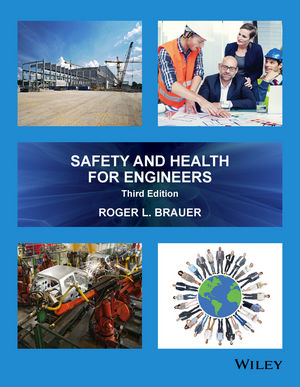
The ambitious Center for Safety and Health Sustainability was officially launched at a reception and press event last week in Chicago during the American Society of Safety Engineer’s annual conference.
About 30 people attended. OSHA’s Dr. Michaels sat in the back listening. The presidents and executive directors of ASSE and the American Industrial Hygiene Association were present; their groups are partners in the center. Safety leaders from the UK and Australia were also present, along with experts in safety and health management systems such as ANSI Z10 and OHSAS 18001.
The center’s objective aims high: get occupational safety health performance metrics to be a much larger component of corporate sustainability annual reporting, using the voluntary Global Reporting Initiative (GRI) guidelines. The lead GRI manager in the U.S. (GRI is headquartered in Amsterdam), Mike Wallace, was present and gave a 15-minute presentation on current sustainability reporting.
Safety and health metrics are almost completely missing in action as a measure of a company’s sustainability performance, as validated most often by third-party auditors, as you would audit financial records. Current reports focus on corporate ethics, environmental management (total waste generated, water consumption, energy consumption, GHG emissions, etc.), social issues such as community relations and labor rights, and corporate governance.
And the U.S. lags in sustainability reporting, according to GRI research. Who’s reporting? 45% of corporate sustainability reports come from European countries; 20% from Asia; and 14% from Latin American and 14% from North America.
GRI plans to update its reporting guidelines in 2013, and the new Center for Safety and Health Sustainability has its work cut out for itself contributing consensus new occupational safety and health metrics to be part of the new guidelines. The center is a non-profit, stand-alone operation that will be governed by a board of directors representing private industry, labor, NGOs and other stakeholders.
What is driving companies to compile and report on sustainability performance? The financial markets worried about lending capital to enterprises with global supply chains that can have weak links (think food quality problems, lead in toys, worker suicides in Chinese factories, accounting irregularities) that damage corporate reputations and lower their value on Wall Street.
From GRI’s Global Organizational Stakeholder newsletter:
Why did you decide to become a GRI Organizational Stakeholder?The American Society of Safety Engineers (ASSE) spent two years collaborating with other safety and health organizations both in the U.S. and abroad to find a way to develop and define the safety and health aspects of sustainability.
These organizations include the American Industrial Hygiene Association (AIHA), whose members serve the needs of occupational and environmental health and safety professionals practicing industrial hygiene in industry, government, labor, academic institutions, and independent organizations; and the Institution of Occupational Safety and Health (IOSH), a United Kingdom-based safety and health practitioner organization. Collectively, they represent approximately 80,000 safety and health professionals around the world.
The culmination of these organizations’ efforts was the Center for Safety and Health in Sustainability. The Center has the primary goal of developing and defining safety and health as a vital part of sustainability, and also promoting it with the ultimate goal of improving the safety and health of workers worldwide.
Working with GRI, which is the most widely known and respected sustainability reporting framework, was the natural next step. We recognized that GRI’s vast experience in sustainability reporting and their existing network of stakeholders would allow us to work toward a standardized framework for measurement and reporting safety and health sustainability/CSR performance.
What are you most hoping to gain from the program?
We were troubled by the fact that more than 2.3 million people die from workplace injuries and illness every year, resulting in losses both tangible and intangible.The vision that ASSE, AIHA, IOSH, and ultimately, the Center, maintain is for all organizations to ensure that the protection of the safety, health, and well-being of workers, customers, and neighboring communities is among the primary considerations in any business practice, operation, or development.
To work toward this end and in coordination with GRI, ASSE and its counterparts will advocate for a comprehensive and standardized approach to measuring not only lagging, but leading indicators of safety and health performance.
What role can professional associations play in mainstreaming sustainability reporting?
Professional associations harness the power of all their members, including their members’ professional knowledge and business connections. They also serve as centralized media for thought production and possess the will to create initiatives such as the Center. ASSE and its counterparts in the professional association world are no different, and provide a direct line to precisely the audiences whose attention GRI needs in order to exact change and make sustainability reporting a normal aspect of organizational life.We would like to offer our expertise in occupational safety and health as GRI creates the G4 Guidelines.
We have developed a list of key safety and health performance indicators to encourage a comprehensive and standardized approach to measuring not only lagging, but leading indicators of safety and health. In developing our key performance indicators, we spent a great deal of time gathering and analyzing information on safety and health metrics. We are in the process of vetting these key safety and health sustainability performance indicators with other international safety and health organizations, corporations, and our broader stakeholder community.
Specifically, we are working with INSHPO – a group of 14 international safety and health practitioner organizations representing eleven countries, including China, Korea, Australia, New Zealand, Singapore, Italy, Canada, the United Kingdom, Russia, the US, and Mauritius.

